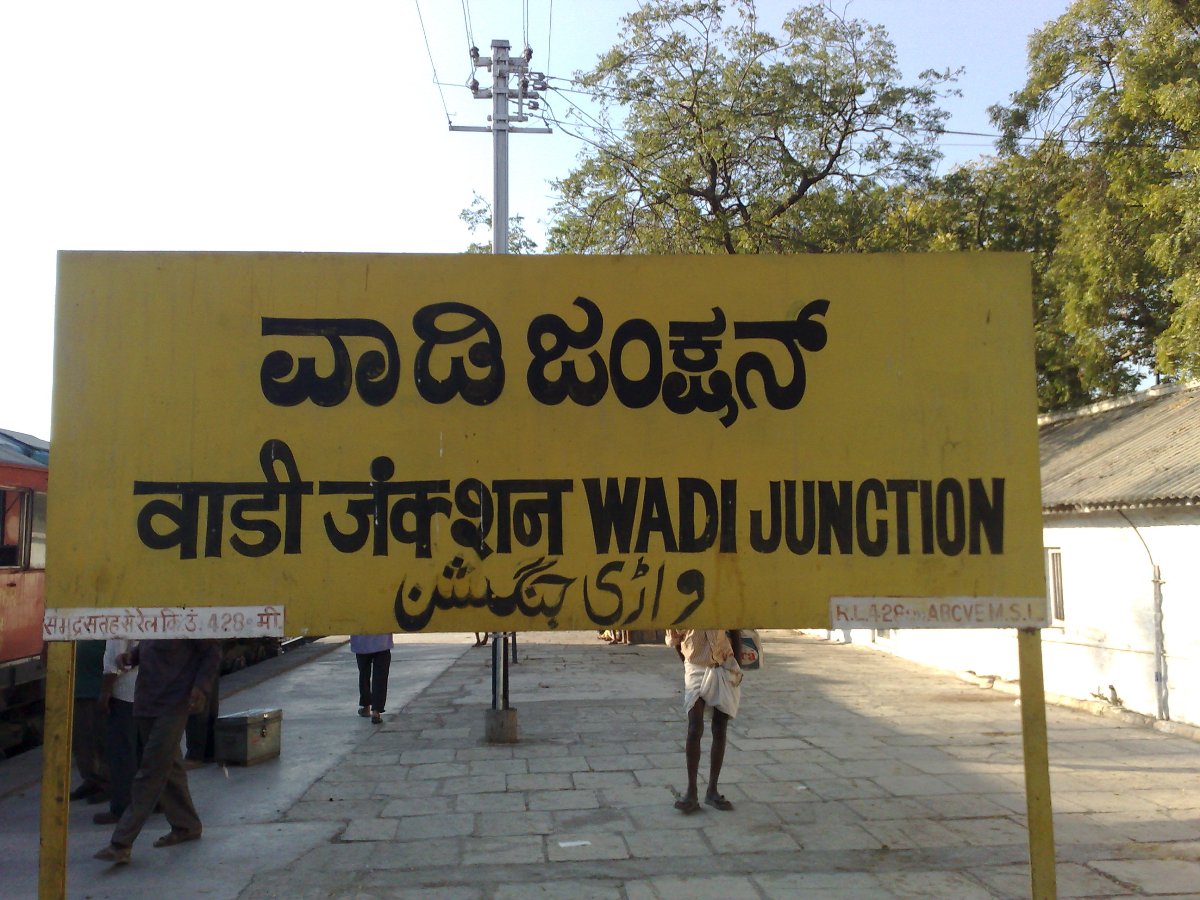Beginnings of a new era..

With the construction of railway line between Wadi and Secunderabad, modernisation started in Hyderabad State
This article is in continuation to the last article on Salar Jung reforms and modernisation of Hyderabad State focusing on Railways, Communication and Coal Mines.
The Salar Jung reforms, in terms of reorganisation of administrative structure, infrastructural development, changes in socio-economic system, and innovative policies, played a crucial role for the development of modern industry. The beginnings of industrialisation and modernisation in Hyderabad State were made during the last quarter of the 19th century.
In the 1850s, the construction of modern railways began in British India. But a decade later, in June 1861, the Bombay government took up the question of instituting a survey from Sholapur to Hyderabad. After considerable discussion, the Government of India decided in 1864, with approval of the Secretary of State, that the trunk lines connecting Bombay and Madras should pass through Gulburga, Raichur and Gooty.
The beginnings of modern railway system in the Hyderabad State can be traced back to the year 1862, when the Government of India ordered the construction of a railroad from Sholapur to Hyderabad.

The Nizam’s Government was prepared to construct the line as a “State affair” or in financial partnership with the Government of India. In 1864, the Resident wrote to the Secretary, Bombay Government, requesting the details of the land required for railways. After detailed consultation for about two years, finally, the Nizam agreed for the construction of railway line between Wadi and Secunderabad. In 1869, a line was surveyed from Gulbarga to Hyderabad by the GIP Railway Company and a year later, Salar Jung sanctioned the construction of a railway line from Gulbarga to Hyderabad.
The Nizam’s Government agreed to give the land free, grant jurisdiction over the line to officers appointed by the British Government. The final memorandum provided for the allotment of one million British rupees by the Nizam Government for construction, maintenance and working of the railway. The British Resident was put in charge of the railway construction and the administrative control rested with the Resident.
The Railway was regarded as the property of the Nizam Government, which provided funds for construction and received profits derived from its working. The first section of the line from Wadi to Secunderabad, 115.75 miles, was opened on October 9, 1874.
The Great Indian Peninsula Railway Company (GIP) managed the line from 1874-1878 with its own rolling stock. At the sole cost of Rs 2 crore, the Nizams constructed the railway line between Hyderabad and Bombay. The Broad Gauge was preferred for the Wadi-Secunderabad line, because it was considered desirable to work it through the agency of the GIP railway company.
Commenting on the role of Salar Jung in building broad gauge line in the Nizam’s Dominions, his son, Salar Jung II, who became the Prime Minister in 1884, noted that “One of the most important channels in which the enlightened policy of the late Minister is discernible is the extension of the railway to your Highness dominions. Not only was Sir Salar Jung a strong advocate for the construction of railways as rapidly as the finances of the State would permit of but at a time when the Government of India were constructing lines on the narrow gauge, and proposed to introduce this gauge into these dominions, he emphatically declared himself in favour of a board gauge”.
Although the railway line from Wadi to Hyderabad was finished and opened for traffic in 1874, during the first five or six years of its working, the earning were so paltry that the Nizam’s Government had to meet almost the whole of the guaranteed interest on the capital. It caused a yearly drain of about Rs 7 lakh on the resources of the Hyderabad State. It was felt that the line, as it stood, could never pay and be a perpetual financial drain.
To be continued…
Prof. Adapa Satyanarayana
Retired Professor
Department of History, OU
Ph. 9573405551
Latest Updates
దేశంలో ‘జీవన వీలునామా’ నమోదు చేసిన మొదటి హైకోర్టు?
క్యారెట్ మొక్క ఎన్ని సంవత్సరాలు జీవిస్తుంది?
ప్రపంచ ప్రసిద్ధి అగాధాలు – ఐక్యరాజ్యసమితి లక్ష్యాలు
అణు రియాక్టర్లలో న్యూట్రాన్ల వేగాన్ని తగ్గించేందుకు ఉపయోగించే రసాయనం?
దేశాల అనుసంధానం.. వాణిజ్య అంతఃసంబంధం
కణ బాహ్య జీర్ణక్రియ
ఇంటి పని వద్దన్నవారు.. స్వీయ శిక్షణ ఉండాలన్నవారు
జీవావరణ వ్యవస్థకు కావలసిన మూలశక్తి దారులు?
మౌజియన్ అనే గ్రీకు పదానికి అర్థం?
సమాజ మేధో కేంద్రాలు.. నాగరికతకు చిహ్నాలు






